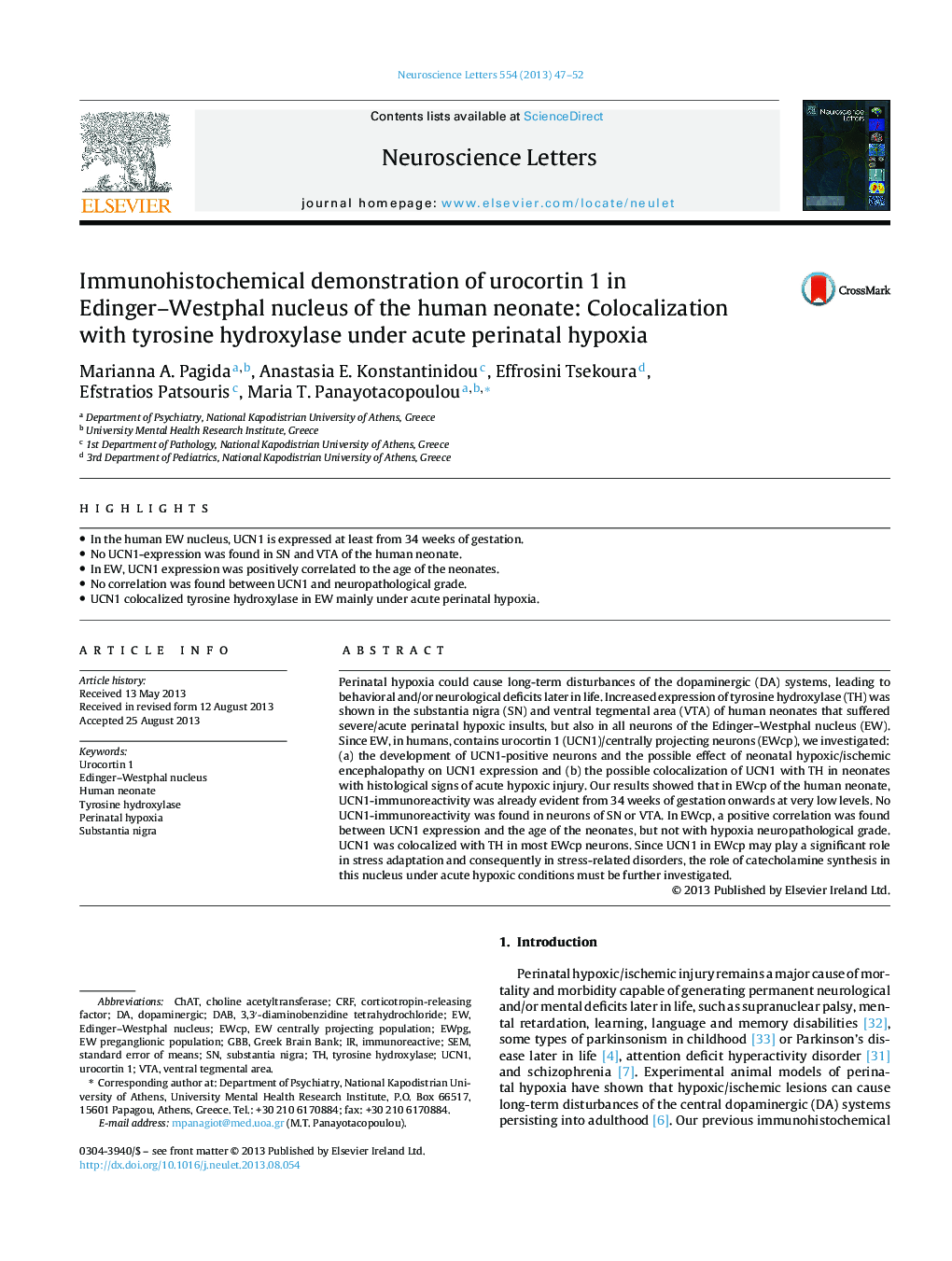| Article ID | Journal | Published Year | Pages | File Type |
|---|---|---|---|---|
| 4343954 | Neuroscience Letters | 2013 | 6 Pages |
•In the human EW nucleus, UCN1 is expressed at least from 34 weeks of gestation.•No UCN1-expression was found in SN and VTA of the human neonate.•In EW, UCN1 expression was positively correlated to the age of the neonates.•No correlation was found between UCN1 and neuropathological grade.•UCN1 colocalized tyrosine hydroxylase in EW mainly under acute perinatal hypoxia.
Perinatal hypoxia could cause long-term disturbances of the dopaminergic (DA) systems, leading to behavioral and/or neurological deficits later in life. Increased expression of tyrosine hydroxylase (TH) was shown in the substantia nigra (SN) and ventral tegmental area (VTA) of human neonates that suffered severe/acute perinatal hypoxic insults, but also in all neurons of the Edinger–Westphal nucleus (EW). Since EW, in humans, contains urocortin 1 (UCN1)/centrally projecting neurons (EWcp), we investigated: (a) the development of UCN1-positive neurons and the possible effect of neonatal hypoxic/ischemic encephalopathy on UCN1 expression and (b) the possible colocalization of UCN1 with TH in neonates with histological signs of acute hypoxic injury. Our results showed that in EWcp of the human neonate, UCN1-immunoreactivity was already evident from 34 weeks of gestation onwards at very low levels. No UCN1-immunoreactivity was found in neurons of SN or VTA. In EWcp, a positive correlation was found between UCN1 expression and the age of the neonates, but not with hypoxia neuropathological grade. UCN1 was colocalized with TH in most EWcp neurons. Since UCN1 in EWcp may play a significant role in stress adaptation and consequently in stress-related disorders, the role of catecholamine synthesis in this nucleus under acute hypoxic conditions must be further investigated.
